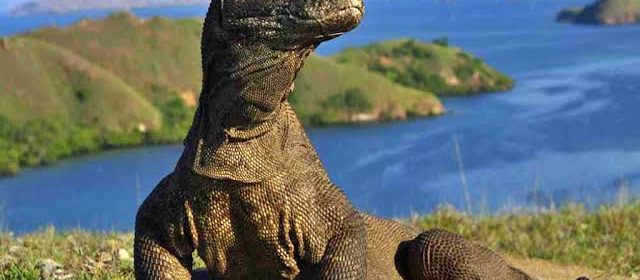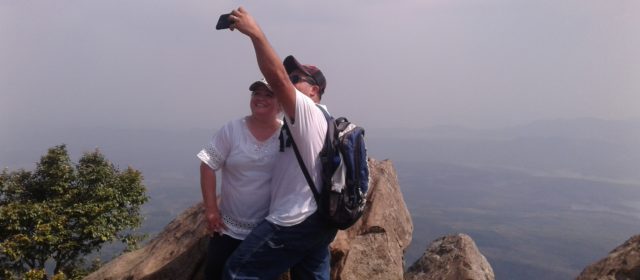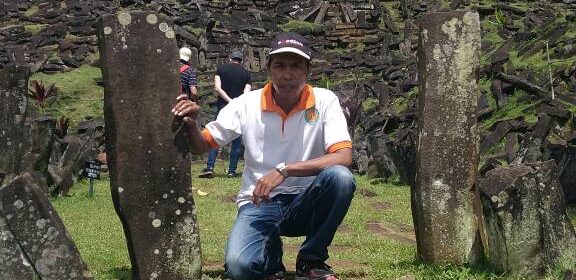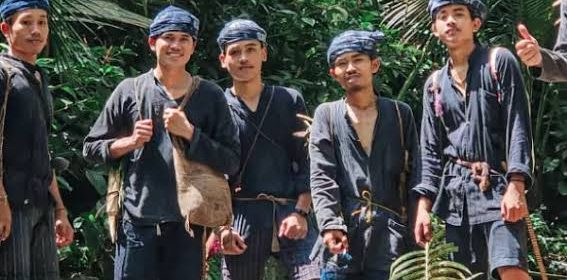...
Read MoreContent goes here National Park, located in the center of the Indonesian archipelago, between the islands of Sumbawa and Flores, is composed of three major islands (Rinca, Komodo, and Padar) and numerous smaller ones, all of them of volcanic origin. Located at the juncture of two continental plates, this national park constitutes the “shatter belt” within the Wallacea Biogeographical Region, between the Australian and Sunda ecosystems. The property is identified as a global conservation priority area, comprising unparalleled terrestrial and marine ecosystems and covers a total area of 219,322 ha. The dry climate has triggered specific evolutionary adaptation within the terrestrial flora that range from open grass-woodland savanna to tropical deciduous (monsoon) forest and quasi cloud forest. The rugged hillsides and dry vegetation highly contrast with the sandy beaches and the blue coral-rich waters. The most remarkable inhabitant of Komodo National Park is the Komodo Lizard, Varanus komodoensis. These giant lizards, existing no-where else in the world, are of great scientific interest, especially for their evolutionary implications. Most commonly known as ‘Komodo Dragons’, due to its appearance and aggressive behavior, the Komodo Lizard, is the largest living species of lizard, growing to an average length of 2 to 3 meters. The species is the last representative of a relic population of large lizards that once lived across Indonesia and Australia. As well as being home to the Komodo dragon, the Park provides a refuge for many other notable terrestrial species such as the orange-footed scrub fowl, an endemic rat, and the Timor deer. The rich coral reefs of Komodo host a great diversity of species, and the strong currents of the sea attract the presence of sea turtles, whales, dolphins and dugongs. Komodo National Park is a landscape of contrasts between starkly rugged hillsides of dry savanna, pockets of thorny green vegetation, brilliant white sandy beaches and blue waters surging over coral, unquestionably one of the most dramatic landscapes in all of Indonesia. Demonstrating exceptional natural beauty that is all the more remarkable as a counterpoint to the dominant lushness of vegetation which characterizes vast areas of forested Indonesia, and with which most of the world associates the archipelago. An irregular coastline characterized by bays, beaches and inlets separated by headlands, often with sheer cliffs falling vertically into the surrounding seas which are reported to be among the most productive in the world adds to the stunning natural beauty of landscapes dominated by contrasting vegetation types, providing a patchwork of colours. Komodo National Park contains the majority of the world’s areas in which wild populations of the Komodo dragon lizard still exist. The largest and heaviest of the world’s...
Read Morehttps://www.citytourjakarta.com/wp-content/uploads/2018/12/VID-20190927-WA0029.mp4 https://citytourjakarta.com/wp-content/uploads/2018/12/VID-20200208-WA0024.mp4 Taman National Halimun Salak Mountain Experience nice trekking that can be done for beginer. Trekking to Kawah Ratu Kawah Ratu is a volcanic crater which is still active, located on Mount Salak. Mount Salak itself is relatively close of Jakarta, which is only around 80 Km away. Administratively, this is Mount Salak in Bogor, West Java. What is unique about this Kawah Ratu crater is, a mostly crater was at the peak of the mountain, but Kawah Ratu is located on the slopes. So to get there, we do not need to do a full ascent to the mountain top, but only around one-third only. The place is very fascinating. It has a good scenery and not-to-difficult track. The track is full of rocks and in some part is full of water which come from the river. We have to use a propper shoes since to avoid twigs, mud, stone and leeches.Experience nice trekking that can be done for beginer It takes 2-3 hours walking until we reach Ratu Crater. And you will see the good damn beautiful scenery of tropical rain forest and active crater. Along the way you might see a troop of Java Owa monkeys performing acrobatic jumps, up high on the trees; very refreshing. Clean water (drinkable) was available at streams along the trek, but only before the last 1 KM sulfuric area. Things to bring Nice walking shoes Drinking water and biscuits Raincoat Masker Torch https://citytourjakarta.com/wp-content/uploads/2018/12/VID-20200208-WA0023.mp4 Call us for further...
Read MoreAbout Raja Ampat The name of Raja Ampat (Raja means king, and empat means four) comes from local mythology that tells of a woman who finds seven eggs. Four of the seven hatch and become kings who occupy four of Raja Ampat biggest islands whilst the other three become a ghost, a woman, and a stone. History shows that Raja Ampat was once a part of Sultanate of Tidore, an influential kingdom from Maluku. Yet, after the Dutch invaded Maluku, it was claimed by the Netherlands. The first recorded sighting and landing by Europeans of the Ampat Islands was by the Portuguese navigator Jorge de Menezes and his crew in 1526, en route from Biak, the Bird’s Head Peninsula, and Waigeo, to Halmahera (Ternate). The English explorer William Dampier gave his name to Dampier Strait, which separates Batanta island from Waigeo island. To the east, there is a strait that separates Batanta from Salawati. In 1759 Captain William Wilson sailing in the East Indiaman Pittnavigated these waters and named a strait the ‘Pitt strait’, after his vessel; this was probably the channel between Batanta and Salawati. Geography The oceanic natural resources around Raja Ampat give it significant potential as a tourist area. Many sources place Raja Ampat as one of their top ten most popular places for diving whilst it retains the number one ranking for underwater biodiversity. According to Conservation International, marine surveys suggest that the marine life diversity in the Raja Ampat area is the highest recorded on Earth.[3]Diversity is considerably greater than any other area sampled in the Coral Triangle composed of Indonesia, Malaysia, Philippines, Papua New Guinea, Solomon Islands, and East Timor. The Coral Triangle is the heart of the world’s coral reef biodiversity, making Raja Ampat quite possibly the richest coral reef ecosystems in the world. The area’s massive coral colonies along with relatively high sea surface temperatures, also suggest that its reefs may be relatively resistant to threats like coral bleaching and coral disease, which now jeopardize the survival of other coral ecosystems around the world. The Raja Ampat islands are remote and relatively undisturbed by humans. The high marine diversity in Raja Ampat is strongly influenced by its position between the Indian and Pacific Oceans, as coral and fish larvae are more easily shared between the two oceans. Raja Ampat’s coral diversity, resilience, and role as a source for larval dispersal make it a global priority for marine protection. 1,508 fish species, 537 coral species (a remarkable 96% of all scleractinia recorded from Indonesia are likely to occur in these islands and 75% of all species that exist in the world[4]), and...
Read MoreThis tour is created for those who like trekking adventure out side Jakarta. It takes about two and half hours to reach the area. Panenjoan Bamboo Bridge On bamboo bridge created by young locale people you can see beautiful panoramic of country side. Gunung Bongkok Trekking Gunung Bongkok is a mountain stone with the altitute about 900 m, located in Tegal Waru Village, Purwakarta regency. The mountain was made by the many big stone. By trekking or hiking you can reach the top of the mountain to see beautiful panoramic of rice field, surrounding village, Jatiluhur lake and the hilly area. Prepare yourself with good grip shoes cause to reach the top you have to walk through many big stone, some of them could be slippery. It takes about 1 hour from the ground to the top. Plered Ceramic Village Plered is well know with activity of people making terracota and ceramic. The skill to produce terracota has been traditionally heritaged from their ancestor since Hindus time. Many design of ceramic could be seen here either modern or classic style. The village has produce a lot of ceramic for spiritual use, home appliances, or just for home...
Read MoreOne of the most interesting things about Gunung Padang, aside from its age, is that during coring it was found that much of the buried structure was reinforced with a type of cement. This bonding agent, which has been used as a mortar and sort of glue in certain parts of the site, consists of 45% iron ore, 41% silica and 14% clay. It’s said that this mixture provides for a very strong and durable mortar base, and is surprising evidence of the level of sophistication of the building technique. First described in the Dutch naturalist manual Rapporten van de Oudheidkundige Dienstin 1914, Gunung Padang had been known to locals for millennia. It sits on a hill in the Indonesian village of Karyamukti, which is in the Cianjur regency, in West Java province. It is described as the largest megalithic site in south-east Asia, and at first glance appears to be a series of terraces with bordering walls and successive steps between each. The terraces are covered in large volcanic rocks organised into lines and shapes, and the local Sundanese people declare the site to be sacred. Early attempts to analyse the site resulted in dating of around 5000 BCE, which would put it in line with other sites in Asia and Europe. Radiometric dating and geoelectric testing done in 2012 seemed to confirm that date, though they found, quite surprisingly, that the site doesn’t actually sit on a hill. It is the hill. Gunung Padang is a pyramid; one of the few pyramids found in south-east Asia. The site was found to have chambers and shafts hidden under the overgrown terraces with walled areas and other structures buried under centuries of natural reclamation. The next step in the excavation was to drill core samples in various locations to try to nail down a more accurate age for the site. This proved to be a dangerous endeavour for three tomography researchers who were beaten and kicked by locals who objected to the work, citing the sacred nature of the site. Nonetheless, the work continued and the results were astounding. Analysis of core samples of the hill and structure began to reveal greater and greater age the deeper they looked. From 5000 years, to 8000 years, to 10,000 years and all the way up to a reported 23,000 years old. These numbers are incredible! The implication is that this site is the oldest known structure of any kind on Earth. “The results of radiometric analysis of the content of the carbon element in some samples of cement in drill core from the depth of 5-15 meters which was conducted in 2012 at the prestigious...
Read MoreBadui Tribe Tour About Badui Tribe In the world fourth-most populous country, where nearly 90 percent of the people are Muslim an enigmatic Indonesian tribe – Baduy tribe (sometimes dubbed the Indonesian “Amish)- live deep in the remote highland jungles, of Mount Kendeng, west Java on area of 50sq km in isolation since the mid-1500s. And only 150 Km from capital Jakarta with few signs of modern development. Badui tribe live much as their ancestors did hundreds of years ago. Anthropologists think they may be the descendants of priests from the Java Hindu Kingdom of Pajajaran who fled into west Java jungle peaks when Muslim armies overran the region in l578, and forming their own religious clan based on strict adherence to unique religious beliefs, perhaps influenced in some ways by the Hindu religion of the Kingdom of Pajajaran before it fell to the Muslim invaders. Their ancient, mysterious religion is core of their ethnic identity. Their rigid religion, a blend of animism and ancient Hinduism, has left them suspended in the past and cut off from the outside world. Anything modern is taboo. Electricity is outlawed. So is adultery, soap, four-legged animals, fertilizer, glass, metal cutlery, cutting down trees, touching money and changing the course of water, poisoning fish and touching the breasts of a virgin. At the heart of their universe are the three villages of the Inner Badui, where residents adhere to the strictest form of their religion. The Inner Badui provides the Badui tribe governing elite and is famed throughout Indonesia for their skill at magic. Foreigners are banned here and few Indonesian outsiders manage to penetrate the inner sanctum. Surrounding and protecting this secret world are the 44 Outer Badui villages, acting as a buffer zone and a place of exile for those from the inner sanctum who break the rules. A serious transgression by one of the Inner Baduy, who wear white shirts to distinguish them, results in banishment to the outer villages known as “The land of sinners.” Today Inner Badui (Baduy Dalam), numbering only 350 in three villages (kampung) in the core area, is the strictest adherents to Badui spiritual belief, while the remaining populations live in the Outer Badui (Baduy Luar) area numbering only 6500. Inner Badui are not permitted to wear any cloth but the rough white homespun they weave themselves. In “the land of sinners” are obliged to wear only their homespun blue-black cloth, and forbidden to wear trousers, some of the outer Badui people now proudly sport the colorful sarongs and shirts favored by their Sundanes neighbors. Each of the three Inner Baduy villages is headed by...
Read MoreEnjoy Jakarta with some highlight and tour such as museum, cultural places, historical places or hidden places with professional guides The tour packages can be the Jakarta highlight such as museums, old city, worship building, cultural area, traditional markets or real life of the city. Just contact us then we will happily arrange an interesting highlight tour to remember for you. About Jakarta Jakarta is the capital city of the Republic of Indonesia, a country composed of more than 13,000 islands with a population of over 180 million. Comprising more than 300 ethnic groups speaking 200 different languages, the Indonesia population exhibits marked diversity in its linguistic, culture, and religious traditions. As the Capital City, Jakarta is a melting pot of representatives from each of these ethnic groups. Jakarta is a special territory enjoying the status of a province, consisting of Greater Jakarta, covering of 637.44 square km area. Located on the northern coast of West Java, it is the center of government, commerce and industry and has an extensive communications network with the rest of the country and the outside world. Strategically positioned in the archipelago, the city is also the principal gateway to the rest of Indonesia. From the Capital City, sophisticated land, air, and sea transport is available to the rest of the country and beyond.Jakarta is one of Indonesia’s designated tourist areas. It is a gateway to other tourist destinations in Indonesia and is equipped with all the means of modern transportation by air, sea, rail, or by land. It has the largest and most modern airport in the country, the most important harbor in Indonesia and is well connected by rail of good roads to other destinations in Java, Sumatra, and Bali. As Indonesia’s main gateway, Soekarno-Hatta International Airport serves a growing number of international airlines and domestic flights. Jakarta is a city of contrasts; the traditional and the modern, the rich and the poor, the sacral and the worldly, often stand side by side in this bustling metropolis. Even its population gathered from all those diverse ethnic and cultural groups, which compose Indonesia, are constantly juxtaposed present reminder of the national motto; Unity in Diversity.Finding its origin in the small early 16th century harbor town of Sunda Kelapa, Jakarta’s founding is thought to have taken place on June 22, 1527, when it was re-named Jayakarta, meaning Glorious Victory by the conquering Prince Fatahillah from neighboring Cirebon. The Dutch East Indies Company, which captured the town and destroyed it in 1619, changed its name into Batavia and made it the center for the expansion of their power in the East Indies. Shortly after the...
Read MoreTime : 08.00 – 16.00 Duration: 8 hours Price: USD 60 per person (min 2 pax) Single Traveler USD 100 Bogor is famous with it’s botanical garden of 87 hectares. Inside this nice garden is located the president palace of ‘Buitenzorg’. Bogor City is about 60 km away to the south from Jakarta. The city is surrounded by three mountain that makes Bogor has fresh air and ever green. The former name of ‘ Buitenzorg” meaning ‘nothing to worry’ given by the Dutch collonial. Enjoy the tour that you can’t have the crowd of busy city of Jakarta. Cycling in Botanical Garden Cycling around of a huge garden with thousand vegetation makes you mind fresh and more peaceful. Besides, you can also learn about vegetation that you never know. After cycling inside the garden you are welcomed to see the Zoological Museum. Here you can see some of the endangered and exctint preserved animal from this country such Java tiger or rhino. Other beautiful and unique birds also can be seen here. Botanical Garden and Museum Zoology Gong Factory Gong is a musical percussion instrument that takes the form of a flat, circular metal disc which is hit with mallet. Pancasan Gong Factory is hereditery managed by one family. The worker also is a descent from the former worker. So the workers are already know how to make gong from the material metal such as bronze, coper, and iron. The technique of processing is still authentic and original from their ancestor. Wooden Puppet Factory Here you will visit a family that is still concerned of the local tradition of Sundanese by producing wooden puppet. Each of the puppet has different character beautifully and patiently carved with spesial kind of wood. Factory Outlets There is also opportunity for you to buy branded clothes with cheaper price in Bogor city. In one street you can find many factory outlets. Other fashion items also can be found here such as bags, shoes, or...
Read More













